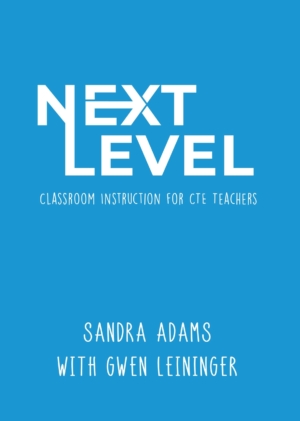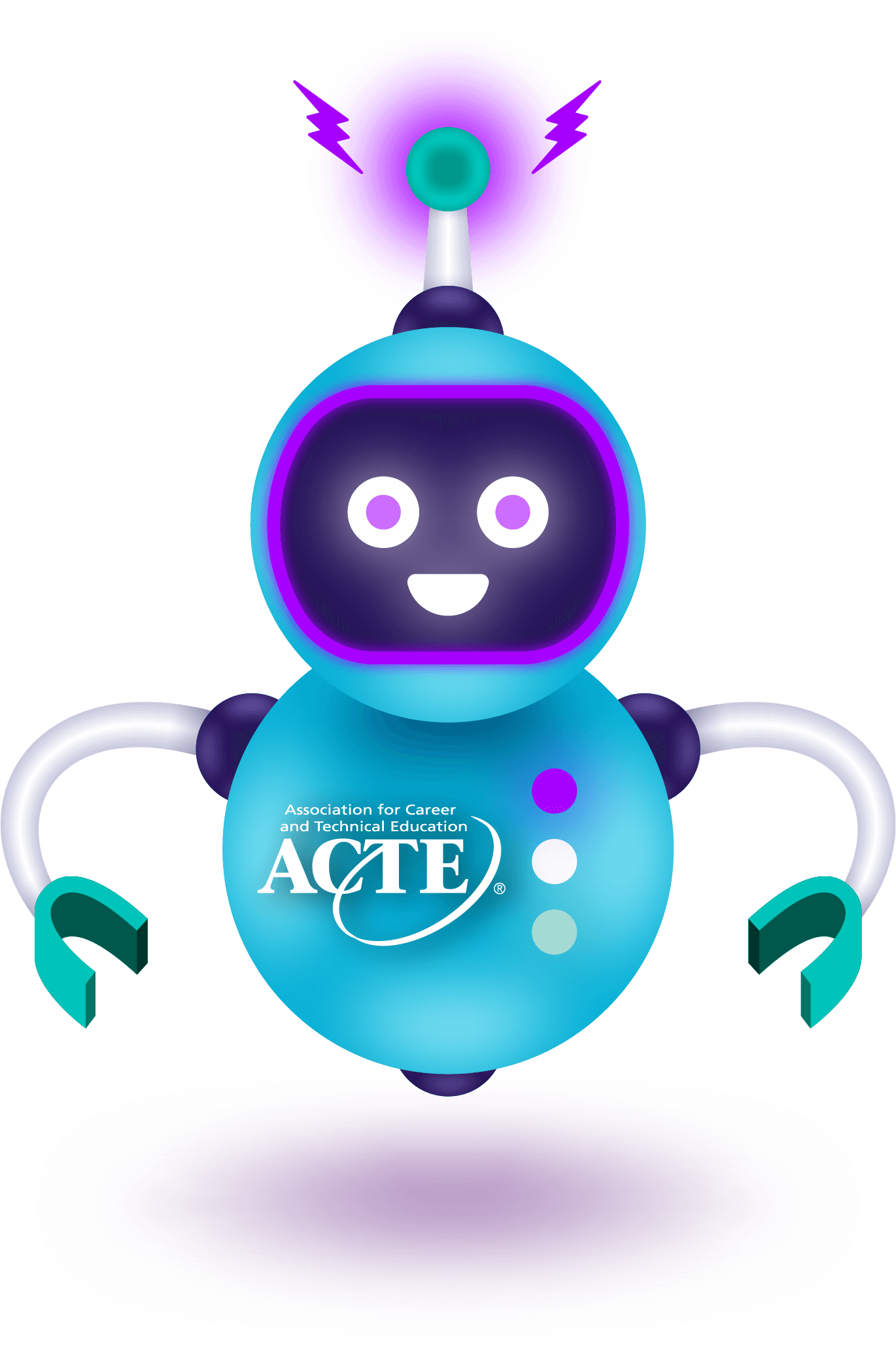 After the recent publication of her new book, instructional coach and frequent Techniques contributor Sandra Adams sat down with us to discuss the state of career and technical education (CTE) today. Discover what inspires Adams’s drive to sustain high-quality CTE programs for all students. And how she hopes her participation in ACTE’s Inclusion, Access, Equity and Diversity (IAED) Mentorship Program will inspire others to continually improve student learning.
After the recent publication of her new book, instructional coach and frequent Techniques contributor Sandra Adams sat down with us to discuss the state of career and technical education (CTE) today. Discover what inspires Adams’s drive to sustain high-quality CTE programs for all students. And how she hopes her participation in ACTE’s Inclusion, Access, Equity and Diversity (IAED) Mentorship Program will inspire others to continually improve student learning.
What inspired you to write Next Level: Classroom Instructions for CTE Teachers?
The inspiration for this book really stemmed from the merging of two different experiences. First, since the release of our first book, But I’m Not a Reading Teacher, I have found myself continually engaged in deeper discussions with teachers on active learning strategies in the CTE classroom. From Alaska to Texas to Ohio, the need for students to engage more frequently with productive talk and peer feedback strategies rang strong. The first book built those strong foundational skills of active learning.
The more I observed CTE classrooms in action, the more I realized the difference in student enthusiasm when they transitioned from classroom to lab. In writing Next Level, I wanted to demonstrate lesson plans that allow teachers to bring those powerful lab attributes into classroom learning.
Who is your intended audience and what do you hope they’ll take away?
My audience includes all CTE teachers and administrators who share a passion for continuous improvement. My hope is that everyone who reads through the eight scenarios in Next Level will apply these strategies to their own lessons. We tried to create the lens for achieving high levels of active learning through four key lab attributes — including freedom of movement, processing together, building student agency, and relevance. I hope that the deliberate focus on four lab attributes inspires others to continually improve the level of active student learning.
Will you please share an example from the book? How exactly will its use help CTE teachers improve classroom instruction?
One of my favorite examples in the whole book is the story of how an automotive instructor transitioned from lecturing to an approach we dubbed “figure it out.” We used the “figure it out” lesson for the “freedom of movement” lab attribute. We discussed how freedom of movement is key to engagement, collaboration and increasing critical thinking. The instructor was reluctant to change, stemming from a deep belief that content was too complex for students to understand on their own. After a lot of coaxing and modeling strategies, he implemented a student-directed, collaborative lesson. Not many of us like to make ourselves vulnerable in front of others, so I was elated when he agreed to field-test a different way to introduce the material.
He decided to design a small group, student-led mini-research project with a presentation. He literally brought pieces of the lab into his classroom. On a large table, he placed an assortment of coils and plugs that students could rummage through. Doing so made the abstract learning more concrete. He divided his class into teams of three students, assigned each group one of four ignition systems, and gave them three prompts to explore:
- Figure out how this ignition system works. Use the text and digital tools at your disposal.
- Diagram the process and illustrate key points.
- Practice how you will describe the process to the class.
Students embraced their freedom to move.
They talked openly and asked each other questions. They visited the parts table, and they asked the teacher for feedback. For an hour students were actively engaged.
Were they able to understand the whole process after an hour? Of course not.
Did they actively construct meaning for themselves? Yes.
And this is the whole point. We cannot construct meaning for someone else. We empower students every time we create opportunities for self-directed learning.
How has COVID-19 affected CTE program activities in your school/ district? How has it affected the wellbeing of your professional learning community at large?
The pandemic shined a spotlight on three significant problems in our district.
- While students are quite savvy with mobile devices, many need our support to master learning via LMS, Google tools, Microsoft, and so forth.
- Many families did not have reliable access to wireless and/or high-speed internet.
- Though all teachers had learning management system (LMS) structures in place, many were not ready to use the LMS as their launching pad for all of the instruction.
Months later, however, we have learned is that our staff really are lifelong learners. Teachers adapted quickly to Zoom and LMS platforms. They all jumped right in to learn and practice. Our levels of collaboration were incredible. Teachers and administrators worked together to develop digital engagement strategies. In addition, our staff worked hard to understand and address the social–emotional needs of our students.
In what ways are teachers innovating to conduct the hands-on, project based-learning inherent in CTE — while keeping everyone safe?
Teachers innovated to make virtual classrooms more engaging for students Several invited interesting guest speakers to enter the digital chat rooms. Students were given opportunities to connect with local leaders and ask questions about different career fields. We learned to perform virtual scavenger hunts how to use breakout rooms, and ways to chunk instruction.
Some CTE teachers delivered kits to students’ homes so that they could access supplies needed for hands-on practice. Our welding teacher demonstrated how to achieve smooth welds with graham cracker and icing. Video became a tool widely used. We asked students to upload videos of them talking through performance skills or demonstrating a skill if they were able to from home.
Please briefly discuss your role with ACTE’s IAED Mentorship Program. In what ways do you hope that you will grow in your participation?
I am currently a mentor with ACTE’s IAED Mentorship program. My mentee is a fellow administrator. Interestingly, I represent a large, diverse, urban area where poverty is widespread. Jim Michlig, on the other hand, represents a more affluent rural area. Despite the differences, we have identified many common concerns, recognizing the need:
- For more internship opportunities
- To continually improve our longitudinal data collections so that we are making decisions from accurate evidence and data
- To create pathway exploration opportunities in our middle schools
We also discussed how we all need to be more conscious of and deliberate in the marketing of programs. We need to be intentional about breaking gender and racial stereotypes. For instance, when my district added programming and networking courses to our IT pathway about five years ago, we were advised by Stephanie Zircher, a Code.org representative, to be attentive to issues of disproportionality with enrollment. We then looked at the 11 enrolled. They were all male, and mostly white.
Zircher explained that IT programs tend to be largely white and male. We realized that we had to increase our investment — of time and resources — to provide more equitable programming. Through targeted efforts to increase accessibility, program enrollment expanded to include five minority students and three young women. The following semester, two students were hired as interns with a local software company. I accompanied them to their orientation meeting. And, these, I saw the truth in Zircher’s cautionary words. The entire staff was white, and mostly male. We owe it to our students to fight to make such high-demand career pathways available to all students.
Is there anything else you’d like to share?
It has been well established that the quality of the teacher is the most influential factor on student achievement in any classroom. My passion lies in building instructional capacity to sustain high-quality CTE programs. This involves deliberate planning, to achieve greater levels of equity, accessibility in classroom learning, and in work-based learning experiences. Collaborate! Consider creating professional learning communities (PLCs) within your CTE staff. This will be an excellent first step.
Imagine if PLCs were designed to research IAED and field-test strategies to provide greater equity. Then team members share their experiences throughout the years. The end result is the creation of social capital. Staff become more committed to the vision and mission of equitable instruction.
Sandra Adams recently authored a course on PLCs (EC119), available for credit on CTE Learn. Additionally, she will host a webinar, Professional Learning Communities: How to Reach Transformative Change, on Jan. 28.
Purchase her new book, Next Level: Classroom Instructions for CTE Teachers, in ShopACTE.






